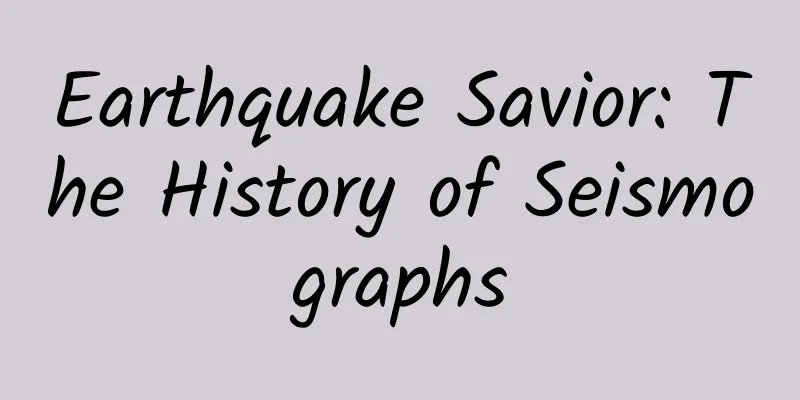What surprises will there be when samples from asteroid Bennu return?

|
At 10:53 a.m. EST on September 24, the Pluto probe sample capsule carrying samples from the surface of the asteroid Bennu successfully landed in a desert near Salt Lake City, Utah. What is so special about the asteroid Bennu being chosen as a sampling target? What new technologies are used in the probe's long sampling and return mission? What risks need to be overcome? What scientific and technological gains may this mission bring to scientists? Why choose BenU? The asteroid Bennu was discovered by the NASA-funded Lincoln Near-Earth Asteroid Research Team in 1999. With an equatorial diameter of about 500 meters and an orbit about 7.5 million kilometers from the Earth's orbit, it quickly attracted the attention of the Planetary Defense Coordination Office and was classified as a potentially hazardous celestial body. The sample capsule landed in a desert near Salt Lake City, Utah, USA After continuous observation and precise calculation, scientists believe that the asteroid Bennu has a 1/2700 chance of hitting the Earth between 2175 and 2199, making it a high-risk target among all similar near-Earth asteroids. As a result, Bennu stood out from many "competitors" and became the target of the Pluto probe's survey and sampling. Obviously, scientists hope to determine how to deal with these "dangerous elements" by studying its samples. The naming process of the asteroid Bennu is quite interesting: in 2013, Michael Puccio, a 9-year-old American boy, won the right to name the asteroid in a competition. His naming idea comes from Bennu, the sun god in ancient Egyptian mythology, which symbolizes the sun, creation and rebirth. It seems to be a metaphor that the probe has the opportunity to glimpse the secrets of the birth of the solar system and try to solve the mystery of the origin of life. In addition, the ancient Egyptians usually portrayed Bennu as a gray heron, and the contact sampler articulated arm and solar panels of the Pluto probe look similar to the neck and wings of a god, which may have also given the boy some inspiration. In fact, there is another important reason why the asteroid Bennu was chosen as the mission target. Scientists believe that it is rich in carbon and other minerals, and these substances and rocks have existed since the birth of the solar system. Because it is so old, its samples are likely to contain molecular substances that existed when life on Earth was first formed, which is precious "first-hand material". As we all know, all life forms on Earth are based on the combination of carbon atom chains with elements such as oxygen, hydrogen, and nitrogen. Scientists hope to make new discoveries in Bennu's samples and reveal as much as possible the role of organic-rich asteroids in "catalyzing" life on Earth. If there are key discoveries, perhaps humans on Earth are the "aliens" we have been looking for for a long time. From the name of the probe, we can also preliminarily understand the purpose of this mission. "Pluto" is a Chinese translation, and the English abbreviation is transliterated as "Osiris", which is an ancient Egyptian god holding a hook in one hand and a flail in the other. According to legend, Osiris once taught agricultural knowledge to people in the Nile Delta region of Egypt, promoting the reproduction of life, and the asteroid samples brought back by the Pluto probe are likely to contain organic matter that contributed to the origin of life on Earth. In addition, another role of Osiris is the god of the underworld who symbolizes death, suggesting that the asteroid that the Pluto probe is going to explore may collide with the Earth, bringing destruction and death. New technologies solve new problems In 2016, the Pluto probe was launched and headed for the orbit of the asteroid Bennu, but it did not rush to land on the asteroid to "start work", but orbited only 1.6 to 2.1 kilometers away from Bennu. This is also the first time that a probe has successfully orbited a celestial body with such a small size and gravity for a long time. The sample capsule collected about 250 grams of rock and soil samples on the surface of Bennu. In the more than one year since then, the Pluto probe has finely adjusted its orbit and swept every inch of the surface of the asteroid Bennu at various altitudes. For some areas that need to be inspected, the probe's flyby altitude is even as low as 250 meters. Under these close inspections, Bennu, a small bright spot in the ground-based telescope, has become one of the most understood asteroids in the solar system. For example, at the end of 2018, the probe found traces of water on the surface of Bennu. Although the preliminary preparations were detailed enough, before the sampling work officially began, scientists once again faced a difficult problem. Originally, scientists planned to find a flat area with a diameter of about 50 meters on the surface of Bennu as the landing area, but they found that the surface of Bennu was rugged and rocky, and the final working area was only 6 meters in diameter. If the probe landed on the surface of Bennu as a whole, it would likely stir up a lot of dust and debris, causing short circuits and mechanical failures in electronic equipment, so the sampling process must be as quick and efficient as possible. In order to overcome the new difficulties, the probe applied new technologies and solutions. Scientists initially planned to use laser ranging as the main navigation and positioning means for the probe's landing and sampling phases. After the plan was changed, scientists designed a backup navigation and positioning solution based on optical imaging - natural feature tracking technology. Simply put, during the landing process, the Pluto probe continuously took real-time photos of the vicinity of the operating area, compared these photos with the three-dimensional terrain and image database, matched distinctive stones as landmarks, and continuously updated its real-time position, speed and planned sampling position. If a dangerous obstacle is detected in the captured image, the probe can also evacuate autonomously. Next, the Pluto probe extended its articulated sampler arm with a spherical tip, and the head of the sampler extended as far as possible toward the surface of the asteroid. With the momentum of the probe's slow descent, it gently touched the surface of the asteroid. At the moment the articulated arm touched the surface of the asteroid, the probe fired compressed nitrogen, blowing up dust and gravel on the surface of the asteroid and quickly collecting them into the sampler. It's a long story, but in fact, the probe's official operation time was only within 10 seconds, which can be called "a dragonfly touching the water", completing the most critical step of the 7-year mission. As the probe moved away from Bennu, images of the sampler head moving in multiple different positions were used for evaluation, showing that the collected samples far exceeded the 60 grams required by the mission, and the probe could be said to have returned with a "full load." Scientific results await It is expected that at the end of September this year, the sample capsule of the Pluto probe will be separated and finally landed in the desert outside Salt Lake City, USA. In order to ensure the smooth recovery of the sample capsule, scientists have conducted exercises here for several months. When the sample capsule lands, they will quickly recover it to prevent contamination of the earth's environment, and then transport it by helicopter to the clean room of the Johnson Space Center in Houston for sorting. Staff members check the status of the sample chamber According to NASA's plan, 25% of these samples will be sent to about 200 scientists from various countries for research in the next two years. The remaining 75% of the samples are likely to be stored for decades. With the advancement of technology, all kinds of wonderful new ideas and new technologies will surely emerge. NASA will solicit suggestions from scientists from various countries and take out some samples for research at the appropriate time. So what new results might the samples from asteroid Bennu bring to humanity? By "splitting" the name of the probe, we hope to make predictions based on its scientific goals. The professional name of "Pluto" is "Source Spectral Interpretation Resource Security Regolith Identification Explorer", abbreviated as "OSIRIS-Rex". Specifically, O stands for Origins. Scientists hope to sample and analyze a carbon-rich primitive asteroid to study the composition, distribution, and evolution history of its minerals and organic matter; SI stands for Spectral Interpretation, which is to explain the overall properties of Bennu and compare them with the results of ground-based telescope observations of other asteroids; RI stands for Resource Identification, which means that the probe will draw a global property, chemical and mineralogical map of the asteroid Bennu, determine its geological evolution history, and assist in sample research; S stands for Security. The probe measures the Yarkovsky effect (a force caused by the release of heat from a rotating asteroid, which can gradually change its orbit) on a potentially dangerous asteroid and study which characteristics of the asteroid cause this effect; REx stands for Regolith Explorer, and the probe carefully surveys the surface material regolith in the sampling area, recording its structure, morphology, chemistry, and spectral characteristics. In fact, the mission of the Pluto probe is far more complicated than most people imagine. After returning samples from the asteroid Bennu to Earth, it will not "retire" but "set off on a new journey." It is expected to "borrow power" from the Earth, use the gravity slingshot to accelerate, and head to the asteroid Apophis without stopping, and at the same time change its name to "Apophis Explorer." Apophis is also a potentially dangerous asteroid, smaller in size, with a diameter of about 370 meters. It is expected to be about 32,000 kilometers away from the Earth in 2029. By then, the probe will conduct a comprehensive survey of it in order to study the motion characteristics of near-Earth asteroids. Obviously, such a complex orbit change maneuver by the probe is a valuable training experience for the ground team. (Author: Liang Lei, Image source: NASA, Check Expert: Jiang Fan, Deputy Director of the Science and Technology Committee of China Aerospace Science and Technology Corporation) |
<<: Can ordinary people tell the difference between natural diamonds and artificial diamonds?
>>: What is the best time to eat breakfast? No later than this time, many people fail to reach it...
Recommend
New national standards accelerate the reshuffle of the air purification industry. Ablecloud helps Yadu transform to intelligence
Winter is the season when smog is most frequent i...
Does your phone often disconnect from the Internet, lose connection, or receive messages late? Turn on these four switches
When we use mobile phones, we often encounter suc...
Xi'an high-end catwalk selection is arranged throughout the city, recommending exciting projects that you have never experienced, 100% of repeat customers like it immediately
Xi'an high-end T-stage elections are arranged ...
China's Sky Eye, moving towards 1,000 pulsars!
In recent days, a piece of news about China's...
Is the far-leading new M7 the best choice for home new energy SUVs?
With the popularity of the Huawei Mate 60 series&...
Kunshan Social Insurance Fund Management Center: National Internet Security Management Service Platform!
In order to protect network information security,...
2018 WOT Global Software and Operation Technology Summit Sets Sail
【51CTO.com original article】 Since 2012, 51CTO.CO...
Practical Guide: How to promote second-tier e-commerce?
Today I will share with you a practical guide for...
Google returns to China and finally takes action
On July 27, Forbes reported last month that Googl...
China's new energy vehicle sales fell 56.4% in Q1 2020, but Tesla's sales in March exceeded 10,000 vehicles
Affected by factors such as the epidemic and the ...
It has a detachable butt, and a brain on its butt! | Natural Trumpet
Welcome to the 48th issue of the Nature Trumpet c...
Guide to starting a campaign at Station B!
The topic I’m going to share with you today is “H...
Title creation method: How to choose a title for a recommendation channel?
Regarding the skills of choosing titles , I think...
Cauliflower, broccoli, and kale are actually "brothers"
After eating them for so many years, I finally re...









